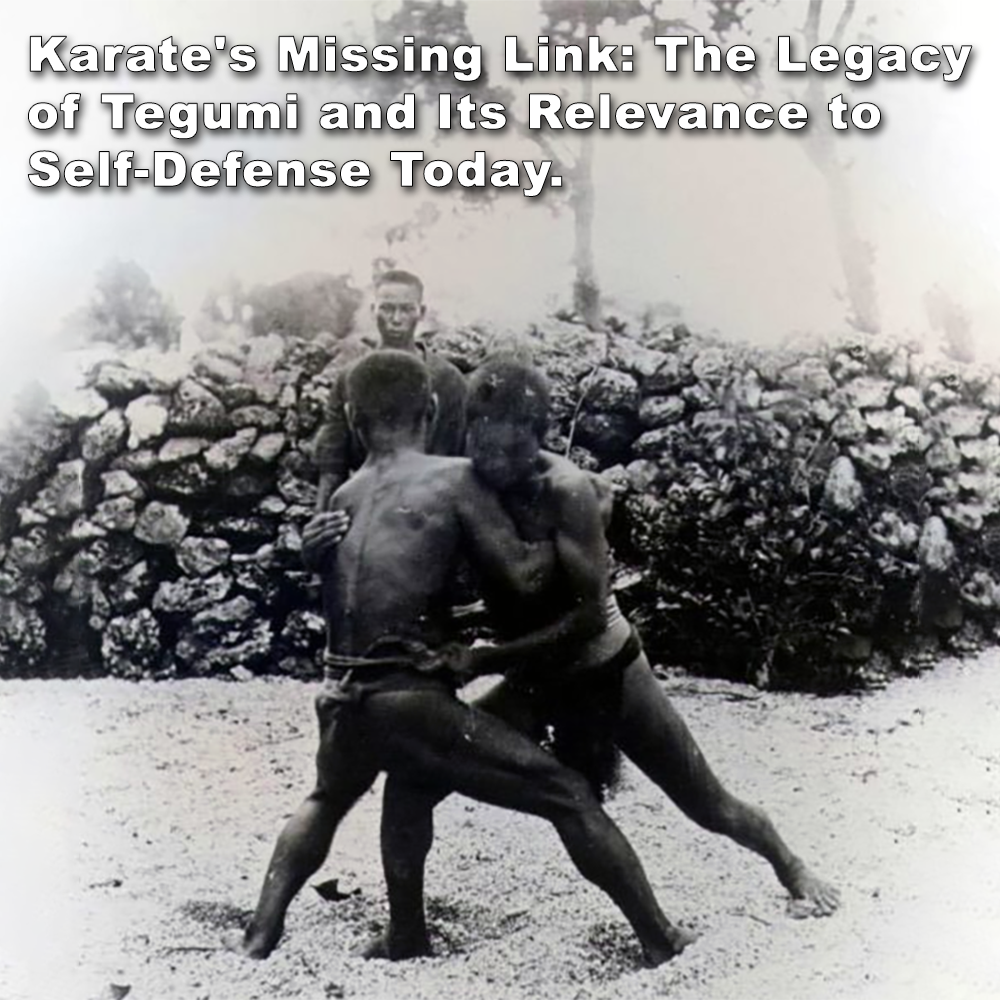
Karate’s Missing Link: The Legacy of Tegumi and Its Relevance to Self-Defense Today.
Posted by ADAM CARTER on MAY 22, 2024

Karate’s Missing Link: The Legacy of Tegumi and Its Relevance to Self-Defense Today.
(Approx 2 minute 25 second read)
In the early to mid-1950s, when karate started to spread globally, the emphasis was heavily skewed towards striking and blocking techniques.
Many of the early Western instructors, who had spent varying amounts of time learning from their Japanese and Okinawan teachers, had a wide range of experiences. Some were military personnel, and due to factors like limited training time and language barriers, may not have been able to fully experience the grappling aspects of the art.
As a result, when these practitioners returned to the West, the crucial close-quarter combat aspects of karate – such as grappling, pulling, twisting, tearing, and throwing – received little attention and are often missing from practice today.
How do we know this? If we step back a little in history, we can see that Okinawa had its own art that predated even ‘Te/Tode’ – as karate was originally called.
This art was called Tegumi (手組) or Mutō (無刀), a traditional form of wrestling that was common during Okinawa’s Ryukyu Kingdom period. Many researchers believe that Tegumi was probably the original form of fighting.
Before 1900, it is believed that karate placed just as much emphasis on throws, joint-locks, chokes, strangles, grips, etc. as it did on striking.
In the early part of the 20th century, karate underwent many changes to make it suitable for the physical education of Okinawa’s schoolchildren. Many techniques were removed to make it safer for children and more practical for teaching large groups.
Today, the reality is that most modern traditional karate has become overly aesthetic and far removed from the karate developed as a self-protection system on the island of Okinawa.
To be effective in a self-protection scenario, it is imperative to have knowledge of all ranges of fighting, as the masters did before us. Therefore, it is vital that grappling forms part of any practice.
Many proponents of modern fighting methods often claim that karate lacks “throws or grappling,” suggesting their methods are superior. However, many of the founding masters reference these practices that seem to be missing today.
Gichin Funakoshi in ‘Karate-Do Kyohan’ wrote, “In karate, hitting, thrusting, and kicking are not the only methods; throwing techniques and pressure against joints are included.”
Karate encompasses all these elements, but sadly, these practices are disappearing from many curricula today. It is often cited that such techniques are only seen in Judo or Jiu-jitsu and not included in karate as a whole, even by those with a long history in the martial arts.
Many practitioners supplement their training with these other arts. However, the principles of karate differ from these external arts; their emphasis is dissimilar and may not apply in the scenarios that karate is meant to address.
As Patrick McCarthy noted in a 1997 article introducing Tegumi; “One of the principal reasons kata remains such a ‘riddle wrapped in a mystery, inside an enigma,’ is that the original 2-person training methods that linked basic technique to defensive application, Tegumi, are no longer associated with the modern tradition.”
History can be a valuable teacher, if you care to take a look. Reviving these classical practices can help us maintain karate’s authenticity and adapt it to modern self-protection needs, staying true to its original purpose. Without these elements, traditional contemporary karate often falls short in real-world pragmatic scenarios, missing the comprehensive approach that made it effective.
